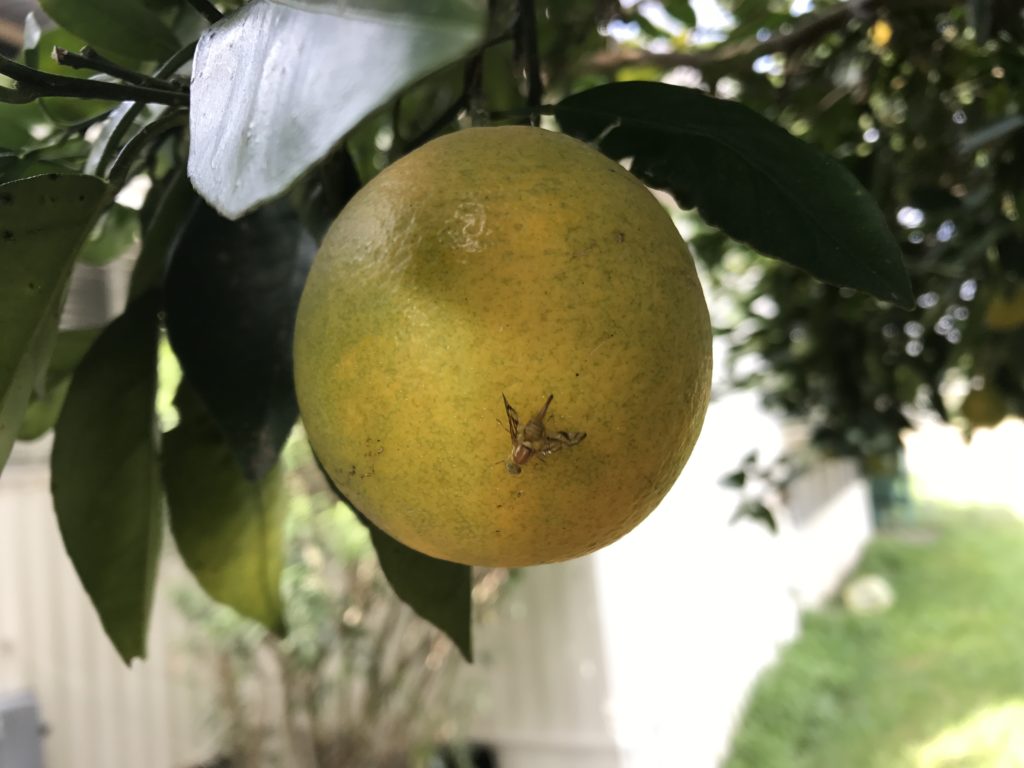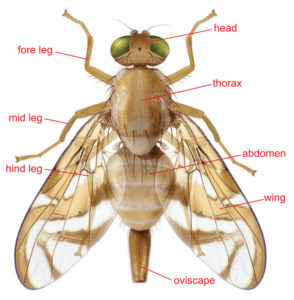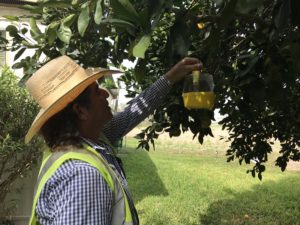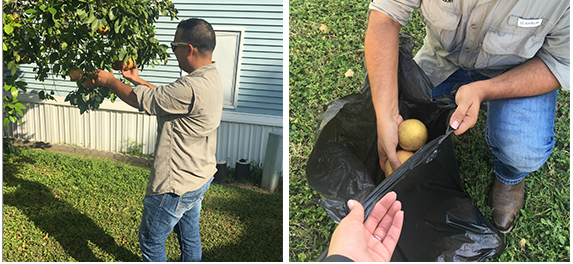Click here to view the Interactive Mexican Fruit Fly Quarantine Map
Please remove all ripe citrus fruit from your trees by April 1st!
BACKGROUND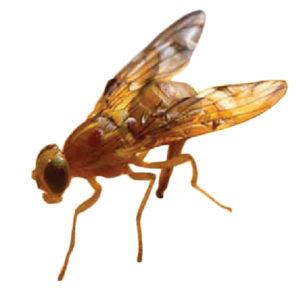
The Mexican fruit fly, commonly known as Mexfly, is an invasive pest that threatens the agricultural production of more than 50 fruit types in the Rio Grande Valley (RGV) of Texas and across the United States. The Mexican fruit fly was first found in Central Mexico in 1863, and by the early 1950s flies were found along the California-Mexico border. The pest has since been detected in Arizona, California and Texas. The US Department of Agriculture (USDA) reports that losses caused by Mexfly establishment could cost an estimated $1.44 billion over a 5 year period of time. Mexfly migrates to the RGV from unmanaged, highly infested groves near the border in Mexico. As a result, the Texas citrus industry has been subject to one or more quarantines on an annual basis for over 80 years. In spite of this, the RGV is a world-renowned powerhouse of quality citrus production, contributing more than $140 million to the State’s economy on an annual basis.
ABOUT THE MEXICAN FRUIT FLY
Female fruit flies lay their eggs in ripening fruit. The eggs hatch into larvae that eat the flesh of the fruit, causing it to rot. Fruit that has been attacked may be unfit to eat. Larvae feed while tunneling through the interior of infested fruits. Microscopic organisms invade these injured areas causing internal decay of the fleshy portions of the fruit.
SYMPTOMS
Visible adult flies that are larger than a house fly. The body is a pale orange-yellow with two to three whitish stripes along the thorax. The wings are clear with several yellow and brown stripes. The female is distinguished by a long and slender ovipositor, which is used to deposit eggs beneath the skin of the host fruit.
Visible larvae within host fruit. The larvae are legless, white to yellowish-white, and grows to a length of 0.4 (or 2/5) inches.
WHAT IS CURRENTLY BEING DONE? DON’T MOVE CITRUS PLANTS
The Texas Citrus Industry along with The United States Department of Agriculture (USDA) and the Texas Department of Agriculture (TDA) have been working on a suppression program since 1986. This program releases sterile fruit flies in an effort to eradicate the Mexican fruit fly from South Texas. The industry is at serious risk from hot spots particularly in residential areas. Current efforts of treating dooryards after flies are trapped is limited and not an effective overall strategy for the dooryard situation. It is not practical to treat all dooryards and even if it were possible not all homeowners would not be supportive of such treatment.
YOU CAN HELP
Texas residents (especially in a Quarantine) can help stop the spread of invasive fruit flies.
- Don’t move or mail fruit or residential citrus trees from the quarantine area.
- Remove all citrus fruit as it ripens as soon possible.
- Don’t leave any ripe fruit hanging on the tree or laying on the ground.
- Double bag any fruit not eaten or used and properly dispose of it in a trash bin.
- Don’t compost any fruit (or vegetables) from the quarantine area.
It is very important to remove all RIPE citrus fruits, guava, avocado and mango (see full list below) from the tree when it is ripe to reduce the population of the Mexican fruit fly. Either eat the fruit or dispose of it in the trash. If you have fruit that you do not intend to eat, such as Sour Orange trees, it is best to remove that fruit as soon as possible to avoid your tree harboring the Mexican fruit fly. If you have any questions, please contact 956-580-1917.
HOST PLANTS
Below are a list of host plants for the Mexican Fruit Fly.
| Anacardium occidentale, cashew Annona cherimola, cherimoya Annona reticulata, custard apple Annona squamosa, sugar-apple Carica papaya, papaya Casimiroa edulis,white sapote Casimiroa tetrameria, matasano Citrus aurantiifolia, lime Citrus maxima, pummelo Citrus aurantium, sour orange Citrus limetta, sweet lime Citrus x paradisi, grapefruit Citrus medica, citron Citrus reticulata, tangerine Citrus sinensis, sweet orange Coffea arabica, arabica coffee Cydonia oblonga, quince Diospyros kaki, Japanese persimmon |
Feijoa sellowiana, feijoa Inga spp. Malus domestica, apple Malus pumila, paradise apple Mammea americana, mammey apple Mangifera indica, mango Sideroxylon capiri, bully tree Passiflora edulis, purple granadilla Persea americana, avocado Pouteria sapota, sapote Prunus persica, peach Psidium guajava, common guava Psidium littorale, strawberry guava Punica granatum, pomegranate Pyrus communis, pear Sargentia greggii, yellow chapote Spondias purpurea, red mombin Syzygium jambos, rose-apple |
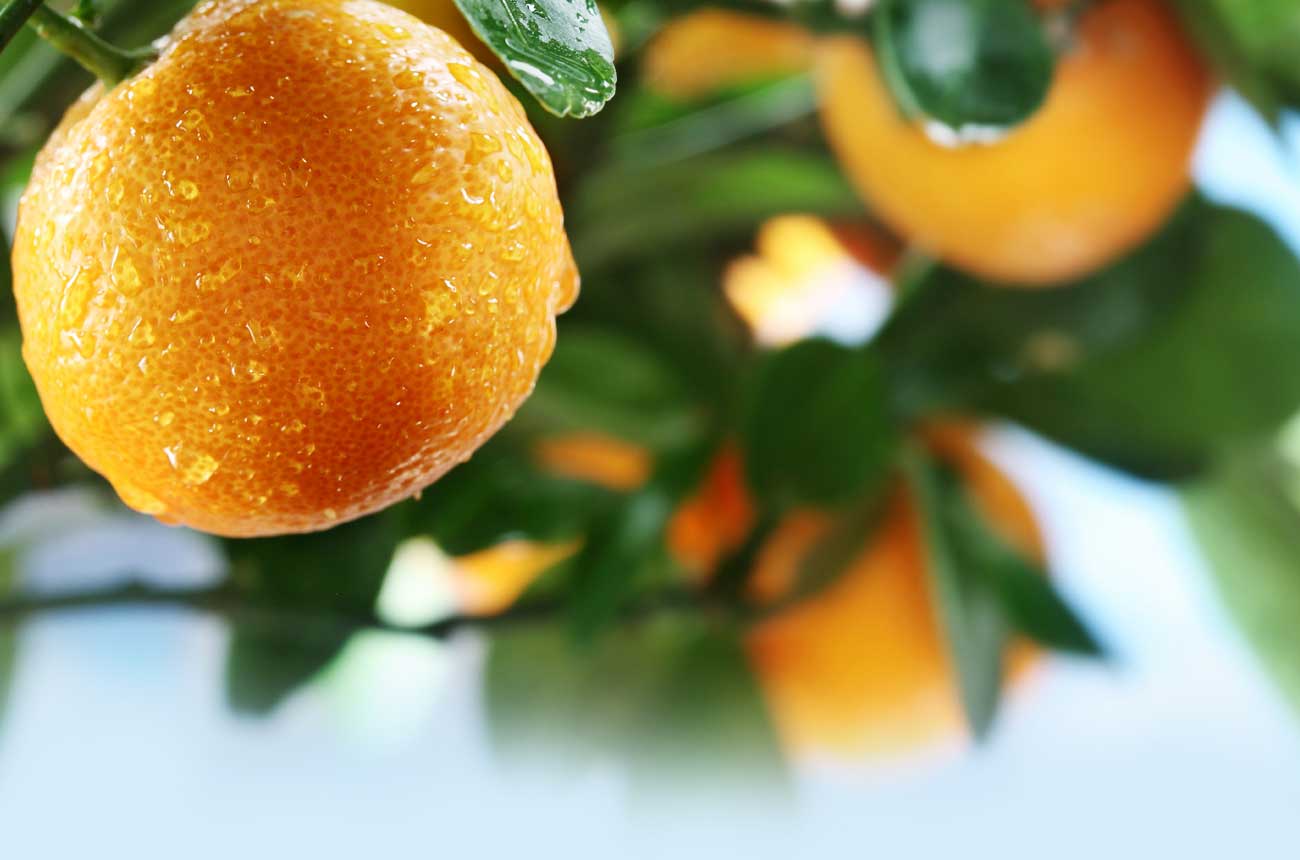



 Report Sick Citrus
Report Sick Citrus